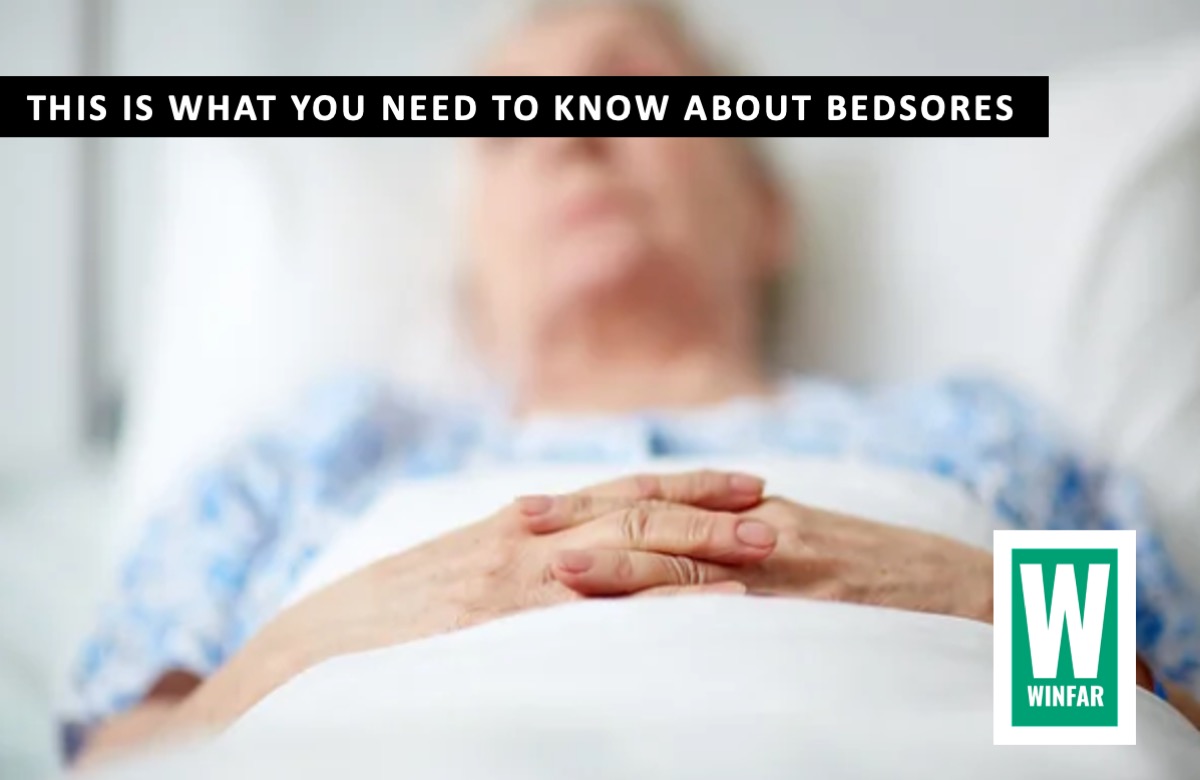If you are caring for an older adult who has limited mobility or any person confined to a bed, recliner, or wheelchair, knowing your way around bed sores is a must. These seemingly harmless wounds can quickly escalate into life-threatening conditions. This is what you need to know as to the why, how, and what of bed sores.
What exactly are bed sores?
Caring for seniors with limited mobility can be a rewarding yet challenging task. As a caregiver it’s crucial to understand the risks associated with prolonged sitting or lying down, as it can lead to the development of bed sores, also known as pressure sores.
Pressure sores or pressure ulcers, are open wounds that develop due to prolonged pressure on specific areas of the body, where skin and tissue start to break down. The culprits are the bony protrusions that press on internal tissues, disrupting blood circulation and causing tissue damage and skin breakdown. Common locations for bed sores include the shoulder blades, tailbone, hips, elbows, and heels.
Why are bed sores a cause for concern?
Initially, at onset, bed sores appear inconsequential. But as time passes, they can progress into a nightmare of tissue decay and infections. In fact, mentioning concerns about bed sores to a healthcare professional often triggers an urgent evaluation by a wound care specialist. Unfortunately, those most vulnerable to bed sores are individuals who are already grappling with debilitating health conditions that limit their mobility.
What causes bed sores?
Here are seven contributing factors:
1. Lack of movement: Advanced age or severe health conditions can limit mobility, leading to extended periods of sitting or lying down, significantly increasing the risk of bed sores.
2. Older age: As we age, our skin becomes thinner and less elastic, making older adults who spend most of their time in a fixed position more susceptible to bed sores.
3. Poor nutrition: Essential vitamins and minerals like protein, vitamin C, zinc, calcium, and potassium are critical for skin and tissue health. Inadequate nutrition can raise the risk of skin breakdown and bed sores.
4. Being underweight: Chronic illness can lead to weight loss, reducing the body’s ability to protect against pressure from bony areas and increasing the likelihood of bed sores.
5. Smoking: Smoking not only harms the heart and increases the risk of cancer but also narrows blood vessels, decreasing circulation to vulnerable tissues, making them more prone to bed sores.
6. Incontinence: Contact with urine and faeces from incontinence can make areas like the tailbone and hips more susceptible to skin breakdown, making them prone to bacterial infection.
7. Cognitive impairment: Conditions like Alzheimer’s disease or dementia can affect an individual’s ability to communicate pain or discomfort from developing bed sores.
The 4 stages of bed sores?
Bed sores progress through four stages, ranging from the initial warning signs to life-threatening tissue decay:
Stage I: This stage is characterised by slight to significant redness and discolouration of the skin at bony pressure points. To determine if it’s a potential bed sore, perform the “blanch test.” If the area blanches (turns white and then flushes red when lightly pressed with a finger), tissue damage has not occurred yet.
Stage II: If left untreated, a bed sore progresses to where the skin breaks open, forming the beginnings of an ulcer. The area becomes tender and painful.
Stage III: A stage III bed sore deepens, forming a crater through skin and layers of tissue to the subcutaneous fat underneath, with less blood flow leading to tissue decay.
Stage IV: In the final stage, a bed sore reaches a critical point, where the ulcerous crater extends through soft tissue to expose bone. This is a life-threatening condition with a high risk of infection.
How to detect a bed sores? And what to look for?
Now, let’s talk about how to detect bed sores. It’s essential to pay close attention to your senior’s body to prevent bed sores or identify them early. Regularly scan their body, paying special attention to bony areas for discolourations. Also, ask your loved one or elderly adult if they experience any pain or discomfort in specific areas.
Common signs of developing bed sores include unusual changes in skin colour or texture, swelling, pus-like drainage, skin that feels cooler or warmer than other areas, and tender spots.
If you suspect a bed sore, don’t hesitate to seek a medical examination immediately, as bed sores can develop and worsen rapidly. Your vigilance can make all the difference in ensuring your loved one’s health and well-being.

